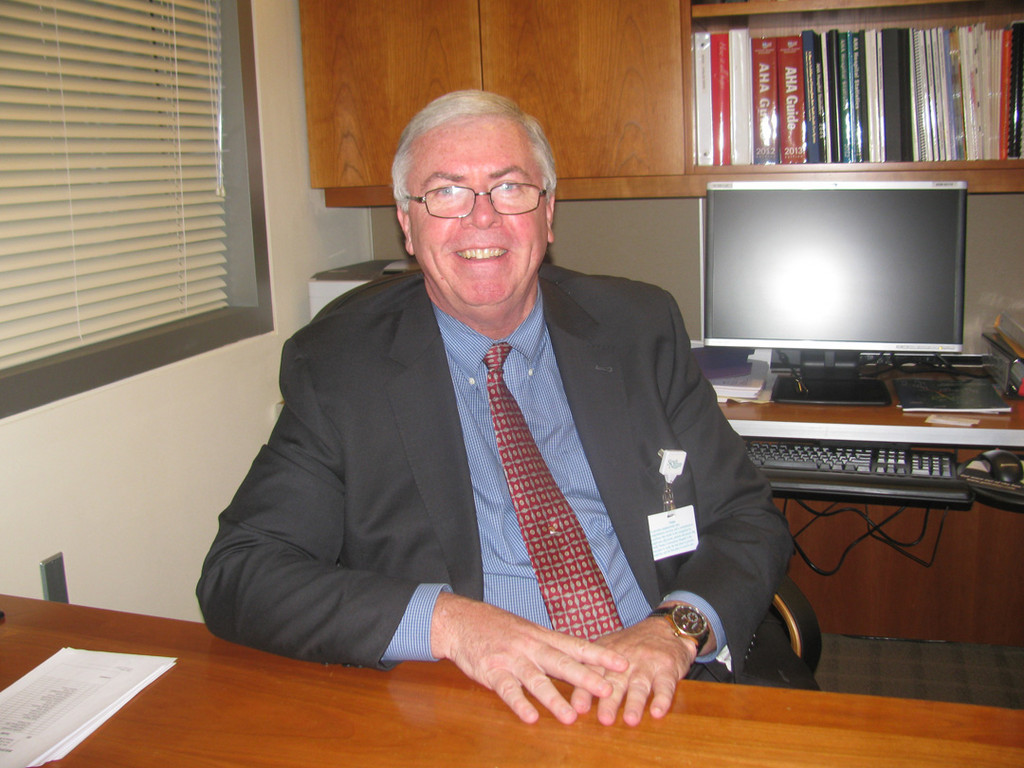‘Community’ is key word for new South Nassau CEO
Hospital stability important to local economy
Talk for any length of time with Richard Murphy, the new chief operating officer of South Nassau Communities Hospital, and you’ll hear the words “community” and “stability.”
Murphy, who has been in the top seat at the Oceanside hospital since Jan. 1, came to Long Island from a Staten Island hospital in September for a three-month break-in period, during which he worked with SNCH’s outgoing CEO, Joseph Quagliata.
Murphy says he quickly found out what the Oceanside community was like. “I didn’t realize that my orientation here would include a natural disaster,” he joked. “I quickly found out that this is a close-knit, unbelievably supportive community, and even though the hospital became the center of the community during the aftermath of Sandy, I found that lots of people supported the hospital as well.”
Murphy said that the
relationship between the hospital and the community it serves is a symbiotic one. “People come to us for all their medical needs,” he said. “At the same time, we employ 3,000 people, many of them community residents. There is a multiplying effect. They take the salary that we pay them and spend the money in local stores and restaurants. In addition, we buy lots of what we need from local vendors, providing them with the opportunity to hire local residents. In a very real way, the stability of the hospital is important to the stability of the community.”
While this is a challenging time for hospital administrators, Murphy said that South Nassau is in sound financial shape. He pointed out that the closure of Long Beach Hospital due to the hurricane has added to the
number of patients SNCH serves and led to an increase in staff as well. “Our daily census prior to Sandy was 300 to 310 patients a day,” he said. “Now we’re running between 340 and 400, and most of that increase comes from Long Beach.”
He pointed to the fact that the hospital’s financial stability is due largely to its mix of privately insured patients and those funded by Medicaid or Medicare. “Most of the hospitals that have a high proportion of subsidized patients are having problems,” he said, “and those problems will increase with the new health exchanges mandated in the health care reform act. Our commercially insured patients run at about 60 percent, and we can balance the subsidized patients with the insured. Many hospitals can’t do that.”
Murphy said he is convinced that with a strong hospital and a strong community as its partner, it will adapt and survive despite the new challenges. “We are moving out into the community with small clinics, and picking up new doctors every week,” he said. “We have to make the new realities work, and we will.”

 44.0°,
Mostly Cloudy
44.0°,
Mostly Cloudy 




